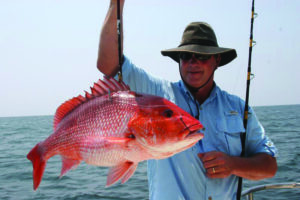The National Oceanic and Atmospheric Administration (NOAA) has been looking at the way it gathers information from recreational fishermen for its Fishing Effort Survey (or FES). The idea involves testing their questionnaires for the sake of “continuous improvement,” and it sure sounds like that’s what’s in order.
In late August, NOAA released results showing that the surveys they’ve been using are resulting in overestimates of the catch.
If you look at the study, it turns out there can be big differences in fishermen’s survey responses depending, in large part, on the way the questions are ordered. The researchers found a 30- to 40-percent discrepancy between the data from the current FES and a test survey that was issued as part of their study.

The Marine Recreational Information Program at NOAA generates estimates of recreational fishing catches based on dockside interviews and mailed surveys. What they learn from those is used to evaluate and manage state and federal fisheries in the Atlantic Ocean as well as the Gulf of Mexico and Hawaii. And since the FES was launched in 2015, much of the data has led to tighter restrictions on sport angler harvest of saltwater gamefish. Most notably, the surveys have led to tighter rules on red snapper in the Gulf and southern end of the Atlantic coast and on striped bass along the East Coast.
Meanwhile, recreational fishermen and charter and party boat captains have long felt there was something amiss — an overcounting of catches and undercounting of stocks — based on their experience.
Also, states that have begun collecting their own catch and trip data have reported populations of fish such as red snapper that are able to withstand a harvest well beyond what the federal agencies are recommending.
One striking example: according to the Great Red Snapper Count, a report resulting from a three-year project funded by Congress in response to angler frustrations and done by the Harte Research Institute at Texas A&M in Corpus Christi, there were roughly 118 million red snapper in the Gulf of Mexico in 2021. NOAA had put that number at 36 million.
The trouble with NOAA’s current system of collecting recreational fishing data is that it depends on the memories of anglers. The agency mails out questionnaires asking fishermen how many days they fished and over what specific period and what they caught. A discovery in NOAA’s examination of the survey instrument is that it seems fishermen make better estimates when they are asked first about a whole year than when they’re asked first about fish caught in a shorter period of time.
“The FES asks respondents to report their fishing activity over a 2-month period and a 12-month period,” says NOAA’s report on the quality of its survey work. “In the pilot study, we changed the question order and first asked about fishing trips in the previous 12 months. Switching the sequence of questions resulted in fewer reporting errors and illogical responses, and effort estimates that were generally 30 to 40 percent lower for shore and private boat modes than estimates produced from the current design.”
What’s interesting to me here is that anglers were more likely to overreport their fishing activity than the opposite.
Another area that needs improvement: where regulators’ counts are coming from. The huge difference between NOAA’s snapper count and the Texas A&M count was attributed to “a major new discovery of a ‘cryptic biomass’ of fish caught over the uncharacterized open bottom habitat in the Gulf,” according to the project’s website.
Something similar likely happens here, where NOAA estimates the number of striped bass based only on examining legal fishing zones, that is, from the shoreline to three miles out. But large schools of striped bass are often found past the three-mile line. They might want to take a look at our “cryptic biomass” of uncounted fish, too.



